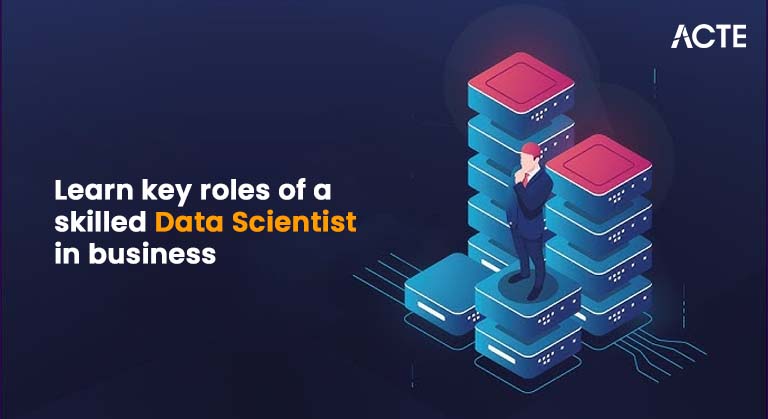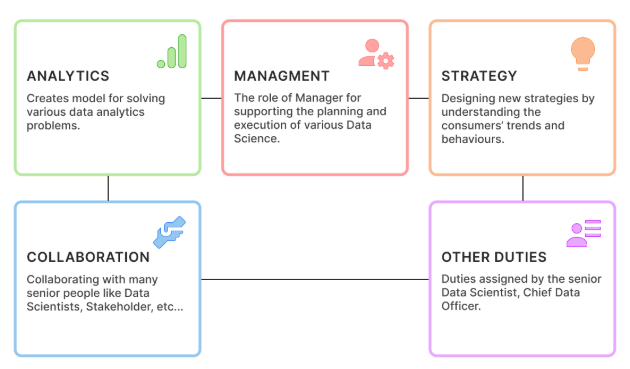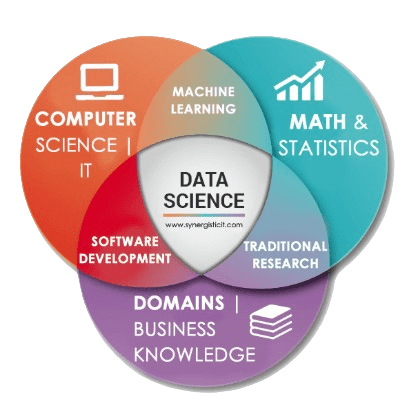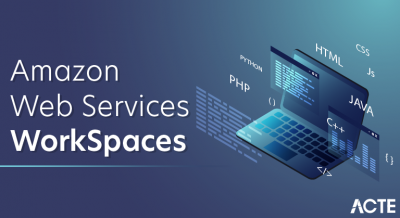
- Data Science Demand Overview
- Data Scientist Job Description
- Data Scientist Roles and Responsibilities
- Skills to Become a Data Scientist
- How to Become a Data Scientist
- Conclusion
Data Science Demand Overview
Data technological know-how is one of the fastest-rising fields in the twenty-first century. Since the beginning of generative AI, organizations have commenced information on the significance of statistics and are seeking to include statistics, technological know-how, and AI answers in their products. Owing to that fact, statistics and technological know-how, along with Data Science Training, are seeing a gigantic increase in reputation. This suggests a developing call for statistics scientist roles. According to the U.S. Bureau of Labor Statistics, there could be 11. five million task vacancies for statistics scientists through 2030. That’s why the sector has long past loopy over statistics technological know-how! Why precisely are companies investing closely in statistics technological know-how? Here’s a thrilling file through Forbes that might solve this concern. Forbes reviews that statistics-pushed organizations are 23 instances much more likely to carry out higher than competition in obtaining new clients, around 19 instances much more likely to hold profit, and approximately seven instances much more likely to maintain customers. The magnificent call for, fantastic effect at the commercial enterprise, and reputation are the motives why statistics technological know-how is an exquisite profession option. Do you need to turn out to be a statistics scientist? Then, you have to recognize what a statistics scientist’s task function entails. Let’s realize that through having an intensive observation of, observe the statistics scientist task description.
Eager to Acquire Your Data Science Certification? View The Data Science Course Offered By ACTE Right Now!
Data Scientist Job Description
A statistics scientist is a character who churns statistics for a company to provide powerful commercial enterprise answers that might assist them in enhancing their offerings, services, and typical commercial enterprise. Ideally, a statistics scientist begins off-evolved by accumulating statistics from websites or databases. After that, they practice their statistical abilities and gadgets, learning modeling competencies to parent the developments and make predictive evaluation happen.
The challenge of a statistics scientist might also additionally range primarily based totally on the company and the unique project. However, right here are a number of the not unusual place responsibilities they usually carry out:
- They function as the lead statistics strategist to immediately pick out and combine new datasets that may be used via product skills and paintings with the technical group to broaden statistics products.
- They examine the statistics for developments and styles, which interpret them with a clear objective.
- Data Scientist broaden and use algorithms and fashions to mine massive statistics stores; behavior statistics and mistakes evaluation to enhance fashions; and easy and validate statistics for uniformity and accuracy.

Data Scientist Roles and Responsibilities
The first-rate way to recognize any process function’s significant obligations and definitions is to read more than one process description. To assist you in identifying the extensive scope of the information scientist function, we’ve read more than one information scientist process description on LinkedIn.
Gathering, Organizing, and Evaluating Data
Large quantities of information are accrued, cleaned, and analyzed via information scientists from diverse assets. They try to locate correlations and style some information to locate the developments. The responsibilities concerning this method include:
- Big Data Processing
- Arranging spreadsheet information
- Using Python (Pandas) to create data frames
- Utilizing R programming language’s statistical programs to look at information
To do these, you want a combination of technical and non-technical competencies. Some of them are the following:
- Statistics
- Programming (Python)
- Machine Learning (Scikit-learn)
- Linear Algebra and Calculus
- Data Wrangling
- Data Visualization
- Big Data
- Data Intuition
- Storytelling
- Collaboration Skills
- Proficiency in programming languages, which include Python or R
- Expertise in coping with Databases and SQL
- Good command of statistics, probability, and mathematics
- Solid knowledge of the system, gaining knowledge of principles
- Proficient in database languages, which include SQL and NoSQL
- Skilled in statistics visualization equipment, which includes Tableau, PowerBI, etc.
- Familiarity with huge statistics equipment, which includes Apache Hadoop and Apache Spark
- Understanding of enterprise objectives
- Good analytical and communique abilities
- Step 1: Acquire a Bachelor’s Degree in Data Science If you’re a university student, you’ve got a super possibility of choosing an information technological know-how situation as a minor. If you’re simply coming into university, you may pick a specialization in information technological know-how. Even if you aren’t from an information technological know-how historical past, you may additionally become an information scientist; however, for that, you want to move for certifications in information technological know-how-associated fields.
- Step 2: Enhance Your Data Science Skills Once you complete the bachelor’s degree, you’re rewarded with a few abilities associated with information technological know-how. However, if you aren’t from an information technological know-how historical past or if you are from a non-tech historical past, Learn Data Science you ought to acquire a few technical and transferable abilities.
- Step 3: Get a Data Science Certification Certification is a credential with a purpose to no longer assist you in constructing your applicable abilities. However, it’ll additionally help you show off your capability to employers. Since information technological know-how is gaining popularity in IT enterprises, taking up a certification software may want to show benefits.
- Step 4: Excel in Data Science Tools Data scientists use diverse types of information technological know-how equipment to complete their responsibilities efficiently. Moreover, the equipment they use depends upon the particular undertaking they want to perform. So you want to get yourself up to speed with equipment that includes ScrapingBee for internet scraping, Tableau for information visualization, Grafana for analytics and monitoring, HighCharts for interactive charts, etc.
- Step 5: Start Your Data Science Career When it involves an information technology profession, it’s vital to plan strategically. You must begin by defining your career goals, like which information technology function you need to pursue, which enterprise you prefer, and which abilities you need to expand further.
Developing Predictive Models
Once information is accrued and prepared via diverse processes, information scientists need to construct diverse models relying on the forms of information that may be expected to be developed inside the market. They broaden diverse devices by learning algorithms and statistical techniques to construct models for gaining insights from the datasets. There are diverse devices for getting to know fashions, including clustering fashions, forecast fashions, outliers fashions, etc, and clustering fashions paintings by sorting comparable information collectively primarily based totally on specific functions and characteristics. A forecast version is a version that predicts destiny primarily based totally on historical details.
Creating NLP and Computer Vision Models
Data scientists gather textual information from diverse assets and preprocess it by cleaning, eliminating prevent words, and extracting applicable functions. Then, they choose appropriate Natural Language Processing algorithms or fashions, including Recurrent Neural Networks or transformers, and teach them about the preprocessed information. Similarly, information scientists gather and preprocess picture or video information. They use convolutional neural networks, or CNN, to extract visible functions. Then, they pick and teach laptop imaginative and prescient models and verify and fine-track them before deployment.
Ready to Earn Your Data Science Certificate? View The Data Science Course Offered By ACTE Right Now!
Fine-Tune Developed Models
One of the key obligations of an information scientist is fine-tuning evolved fashions to beautify the overall performance of a selected venture or database. Initially, the information scientist switches to learning and using the facts and functions received from pre-education on a vast dataset. Then, they use the pre-skilled version as a starting line for the preferred venture. During the fine-tuning method, information scientists teach the version on a smaller, venture-specific dataset to enhance its discovered representation. This assists in enhancing the version’s overall performance, which permits fashions to apply current information more successfully for quicker version development.
Implementing MLOps Practices
They are responsible for deploying devices and learning models in manufacturing environments, guaranteeing seamless integration with the prevailing structures or APIs a capability often gained through Data science Training. They additionally set up CI/CD pipelines for automatic version deployment and work on tracking and retaining version overall performance.
Creating Data Visualizations
Data visualization is a crucial device for statistics scientists to exhibit their findings effectively. This includes diverse graphical representations, such as bar charts, scatter plots, line graphs, and heat maps. This graphical illustration allows the average person to visualize and interpret the findings. As a statistics scientist, you need to select the equipment for statistics visualization cautiously so you can effortlessly convey the message of the analyzed statistics. Diverse equipment is utilized by statistics scientists for statistics visualization, including Tableau, Power BI, HighCharts, D3.js, etc.
Are You Considering Pursuing a Data Science Master’s Degree? Enroll For Data Science Master Course Today!

Translating Technical Terms into Simple Terms
Many colleagues and customers come from non-technical backgrounds. Statistics scientists have the position and duty to interpret complicated technical phrases into easy ones, use diverse analogies, and explain the context and cause of the words.
Skills to become a Data Scientist
The activity of a statistics scientist revolves around gathering, processing, and evaluating massive quantities of statistics to discover significant insights. To do so, statistics scientists use their diverse abilities associated with computer science, mathematics, and statistics-associated concepts.
Here are a few key abilities required to become a statistics scientist:
Set to Ace Your Microsoft Azure Job Interview? Check Out Our Blog on Data Science Interview Questions & Answer
How to Become a Data Scientist
Becoming an information scientist may be challenging, but with exercise and patience, you can reap the rewards. Here is a step-by-step manual for turning into an information scientist.
Conclusion
In conclusion, the function of an information scientist is pivotal in remodeling uncooked information into significant insights that power strategic decisions a skillset developed through comprehensive Data Science Training. Their obligations embody information collection, cleaning, analysis, modeling, and speaking effects via visualizations and reports. Data scientists act as a bridge between technical groups and enterprise stakeholders, making sure that information-pushed answers align with organizational goals. As information continues to form the destiny of industries, the information and flexibility of information scientists stay critical for innovation, efficiency, and aggressive advantage.


